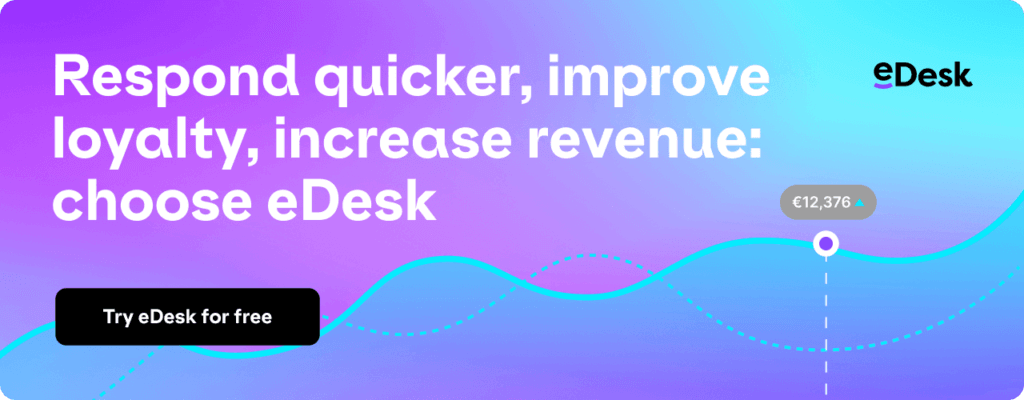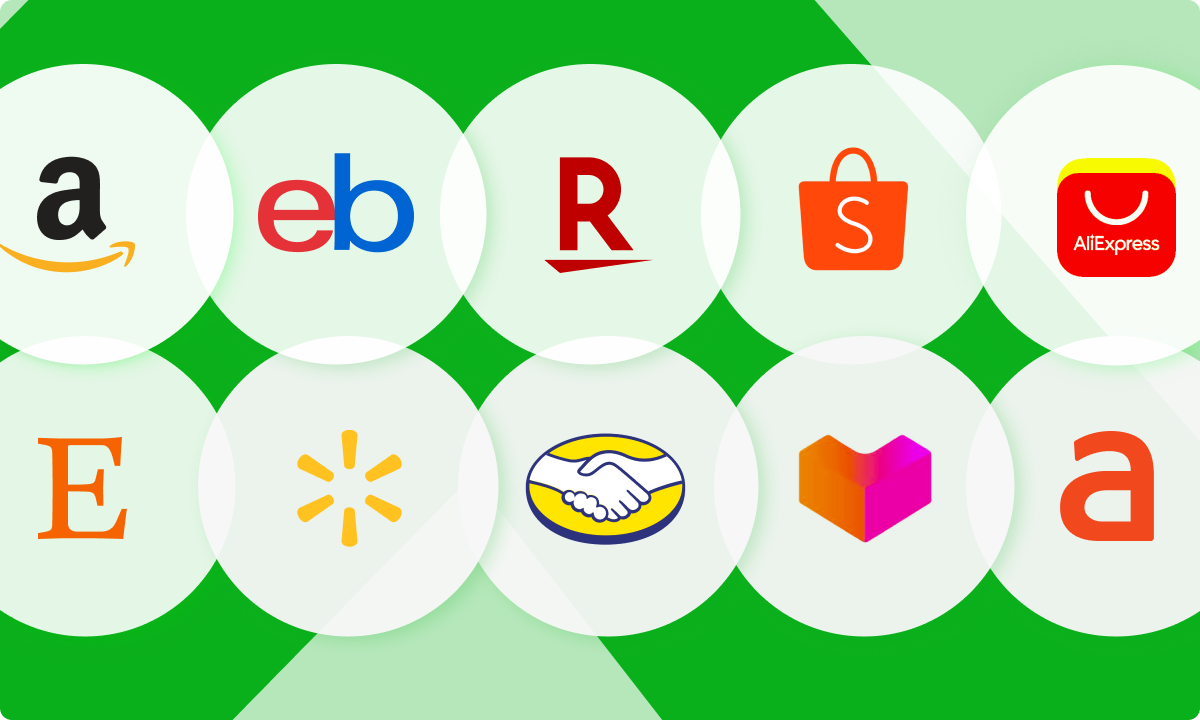The world’s biggest online marketplaces are on a rapid upward trajectory. In fact, according to a 2023 report, 50% of all eCommerce sales take place on Amazon, eBay, and Walmart.
Marketplaces contribute $1.7 trillion to the global economy each year, and European advisory firm iBe predicts this will increase to $7 trillion by 2024. In the US, Amazon alone accounted for roughly 60% of the country’s eCommerce sales.
So, if you’re an online seller looking to increase sales, getting set up on a new marketplace is a great way to boost exposure. You may even want to expand into new territories. With more than 100 online marketplaces around the globe, let’s take a look at some of the best.
1. Amazon
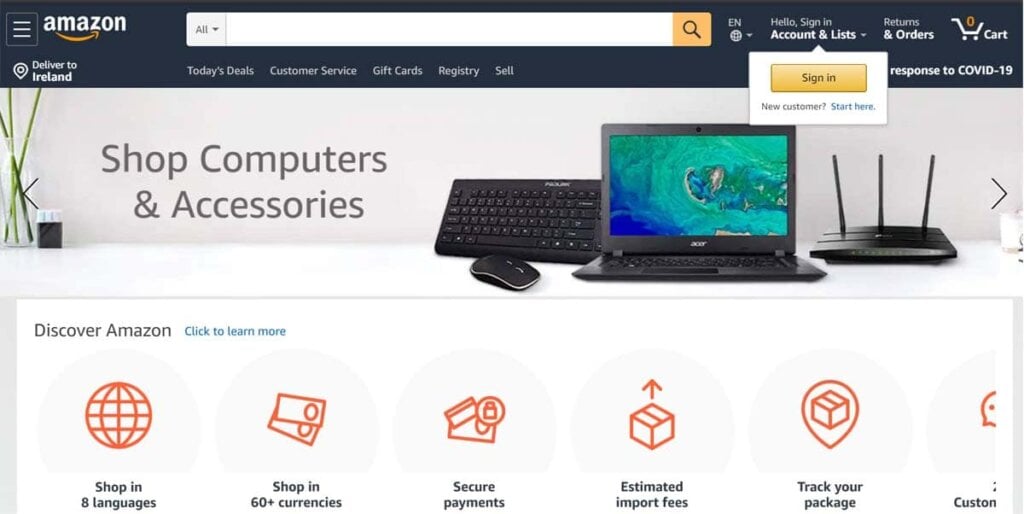
Who: We all know Amazon is the largest eCommerce retailer in the US, but it also runs some of the biggest online marketplaces in Europe, Asia, the Middle East and Australia. In total, the company runs 21 marketplaces, which offers sellers access to consumers around the world.
What: Electronics, clothing, beauty, baby products, jewelry, entertainment, home goods, appliances, sporting equipment and pretty much everything!
When: First launched in 1994.
Where: The US, Canada, Mexico, Brazil, the UK, Germany, France, Italy, Spain, the Netherlands, Japan, India, Australia, Singapore, the UAE, Turkey, Sweden, Poland, Belgium, and Egypt.
How much: You have to pay a monthly subscription fee of $39.99, and an Amazon referral fee of 6-20% on each item you sell. Media products also incur an additional closing fee.
Customer profile: Around the world, Amazon receives 2.2 billion visits each month.
Key requirements for sellers: Excellent eCommerce customer service is required. You also need a valid credit card, bank account, phone number and tax information to get started. To sell in Europe, you’ll also require a VAT number.
2. eBay
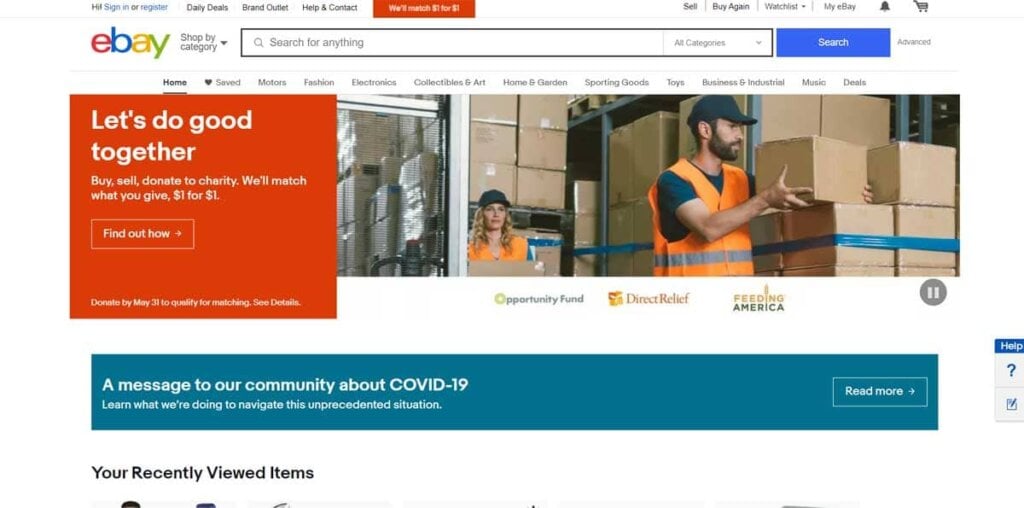
Who: eBay started out as a marketplace for second hand items. Now, it is a household name known across the world for selling both new and used products.
What: Electronics, toys, clothing, beauty, entertainment, home goods, sporting equipment, pet supplies, collectibles and antiques.
When: Founded in 1995.
Where: eBay runs 23 international marketplaces which serve over 100 countries worldwide.
How much: It charges a flat fee of $0.30 to publish each listing and takes a percentage of each sale – usually 10%. Businesses that open an eBay storefront will be charged a monthly subscription fee too.
Customer profile: As of 2023, eBay had 134 million active buyers worldwide. In the US alone, it has 109 million visitors monthly.
Key requirements for sellers: Anyone can start selling on eBay easily. Too many late shipments or product defects can result in account suspension, however.
Recent updates: eBay was originally a marketplace mainly focused on auction-based sales, but in recent times they have gravitated towards a ‘Buy it now’ option on products. 88% of items sold now have a ‘Buy it now’ option.
Related article: How to Sell on eBay
3. Rakuten
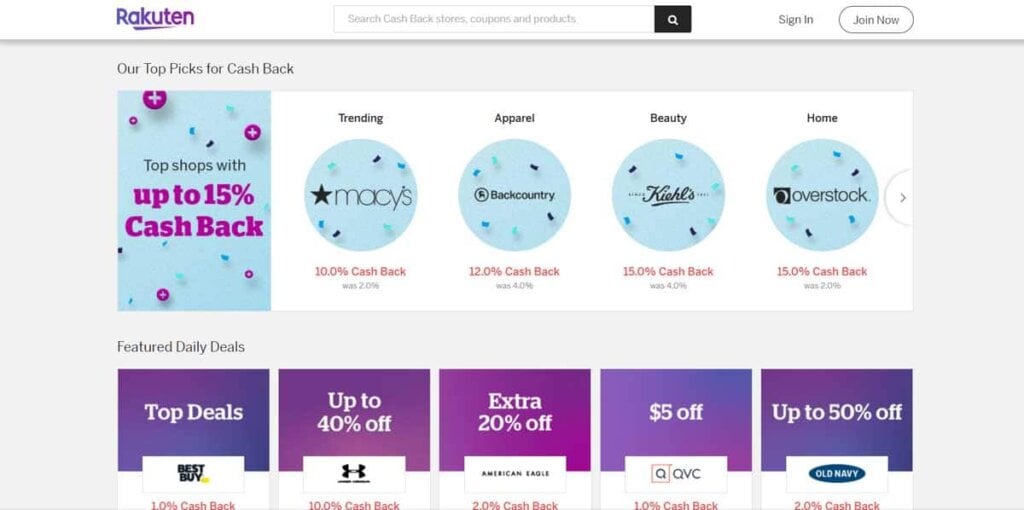
Who: As one of the biggest online marketplaces globally, Rakuten is great for medium to large sellers who want to grow their audience outside of the US and Canada.
What: It sells electronics, clothing, jewelry, beauty and entertainment.
When: Around since 1997.
Where: It is the biggest eCommerce site in Japan, but also operates in the US and 29 other countries around the world.
How much: Rakuten’s US site charges a subscription fee of $39 per month, as well as 8-15% on each sale and a flat fee of $0.99.
Customer profile: The number of users has consistently grown since 2014 and currently stands at 138 million.
Key requirements for sellers: Sellers must have a registered business and a brand name for their storefront.
4. Shopee
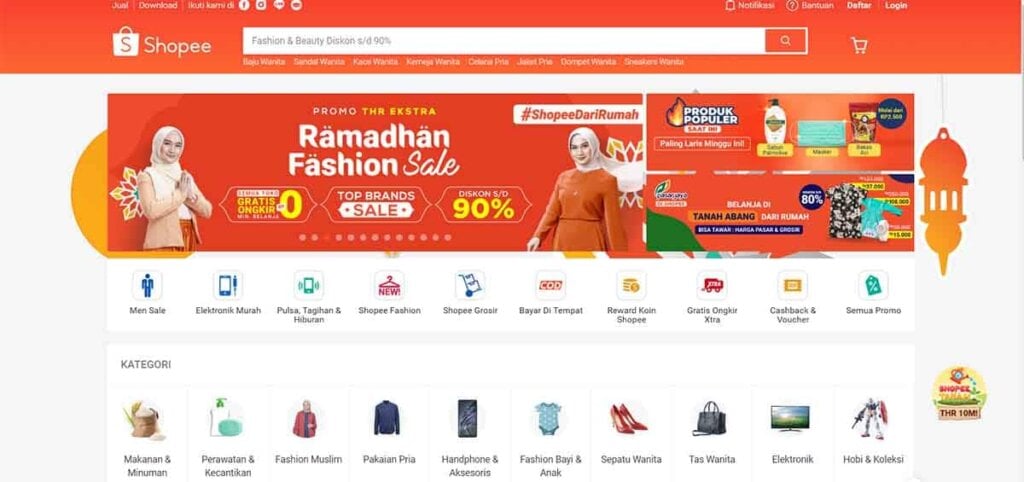
Who: Shopee is South-East Asia’s most popular marketplace. With frequent updates, it aims to tailor its platform to suit local users.
What: Shopee sells electronics, clothing, beauty, home goods, pet supplies, sporting equipment and toys.
When: Founded in 2015.
Where: Shopee was first launched in Singapore before expanding to Malaysia, Thailand, Taiwan, Indonesia, the Philippines, Vietnam, and Brazil.
How much: When it launched, Shopee charged no listing fees or commission. However, in March 2020 they began to charge a 2.12% listing fee.
Customer profile: In 2023, Shopee received 124.9 million monthly visits in Indonesia, the country with the highest overall
Key requirements for sellers: Anyone can set up on Shopee under a brand name or their own name, you just need a bank account.
5. AliExpress
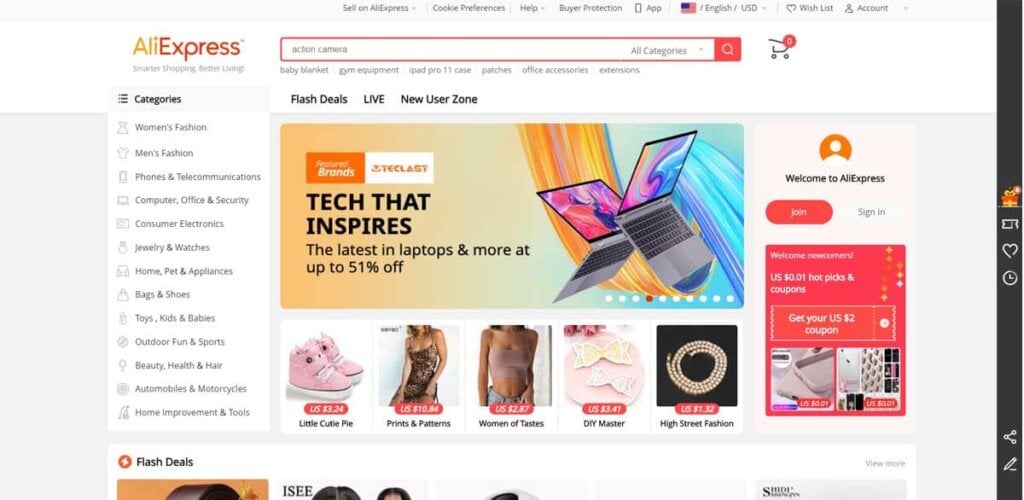
Who: A household name, AliExpress comes in fifth among the world’s biggest online marketplaces. It was originally set up to sell the products of Chinese small businesses.
What: Everything from clothing and electronics, to home goods, jewelry, toys and pet supplies.
When: Launched in 2010.
Where: AliExpress’ global eCommerce platform serves people in over 220 different countries and regions.
How much: Depending on the product category, AliExpress takes between 5-10% from each sale.
Customer profile: In 2023, a staggering 400 million active members used AliExpress.
Key requirements for sellers: Sellers must have a limited company.
Related article: Alibaba vs AliExpress: which platform is best for dropshipping
6. Etsy
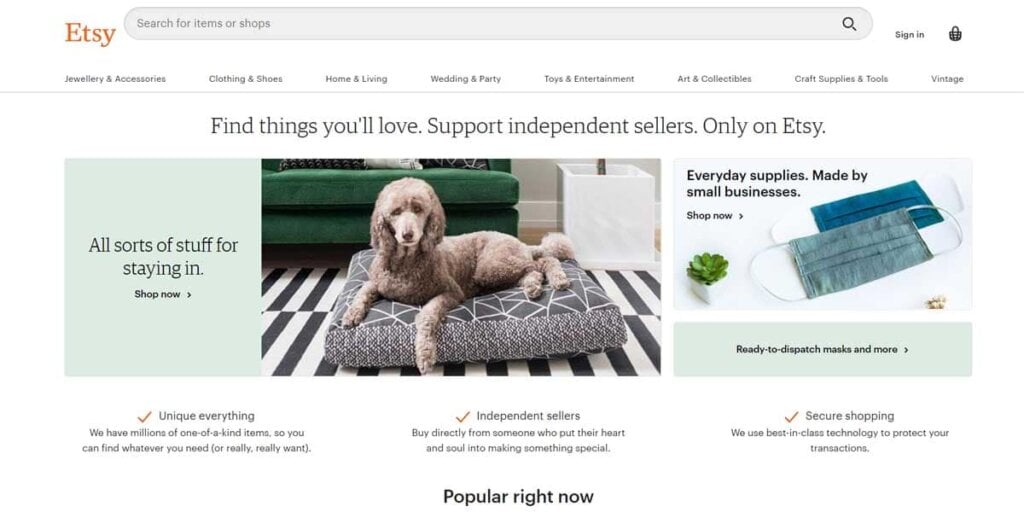
Who: Etsy is a niche American marketplace focused on selling handmade products, vintage items and craft supplies.
What: Art, jewelry, clothing, home decor, toys, art, craft supplies and tools.
When: 2005.
Where: Available in 50 countries, including the US, Australia, Singapore and much of Europe.
How much: Etsy charges a listing fee of $0.20 and 6.5% of each sale.
Customer profile: In 2023, Etsy had over 92 million active buyers.
Key requirements for sellers: Craft supplies, tools and party supplies are the only newly manufactured items allowed.
Recent updates: Sellers now have the option to enroll in the Share & Save Program. With Share & Save, you can save on Etsy fees when you drive your own traffic to your shop and listings.
7. Walmart
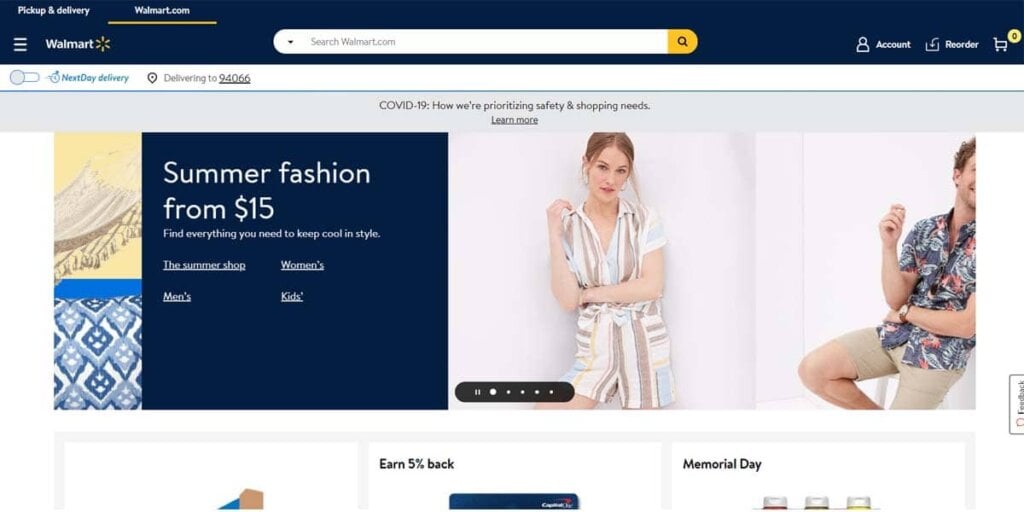
Who: Walmart is the world’s largest retailer and is now also one of the world’s biggest online marketplaces. It holds a 6.3% share in the US eCommerce market.
What: It offers electronics, clothing, beauty, entertainment, home goods, appliances, sporting equipment and groceries.
When: The marketplace was set up in 2009.
Where: The USA, Canada, Africa, Chile, China, India and Mexico.
How much: Sellers pay a referral fee of 6-15% on each sale. There is no monthly subscription fee.
Customer profile: Walmart receives 382 million monthly visits worldwide.
Key requirements for sellers: Sellers must apply to sell on the marketplace. You must have an established reputation, as well as a warehouse and business registered in the USA.
Recent updates: Walmart Fulfillment Services (WFS) now includes big and bulky items. Their low-cost end-to-end fulfillment solution is now offered to sellers who list big and bulky items such as canoes or trampolines.
Related article: How to sell on Walmart: The Step-by-Step Guide
8. Mercado Libre
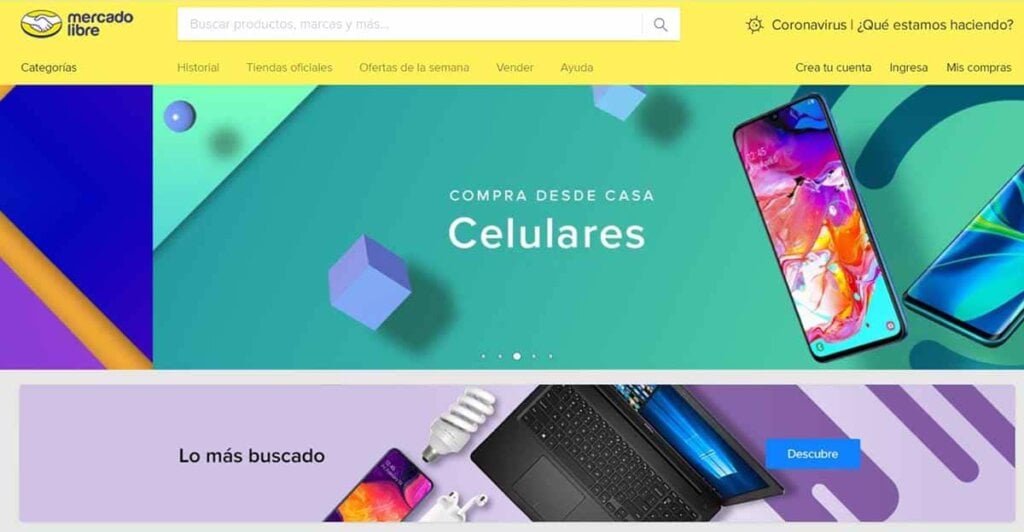
Who: Mercado Libre is the leading marketplace in South America. Sellers in the US and China can use Mercado Libre’s partner carriers to ship here.
What: It sells electronics, clothing, home goods and garden accessories.
When: Founded in 1999.
Where: Mercado Libre operates in 18 Latin American countries. Its cross-border trade program lets sellers reach customers in Mexico, Brazil, Chile, Argentina and Colombia with a single account.
How much: The platform takes 16-17.5% of each sale.
Customer profile: In 2021, it had 272 million monthly visitors from Brazil alone.
Key requirements for sellers: Merchants are screened and need to be in business at least a year and have monthly sales of $100,000 to guarantee approval.
Recent updates: The company has even gone so far as to open new distribution facilities aimed at enabling same-day deliveries in key metropolitan regions.
9. Lazada
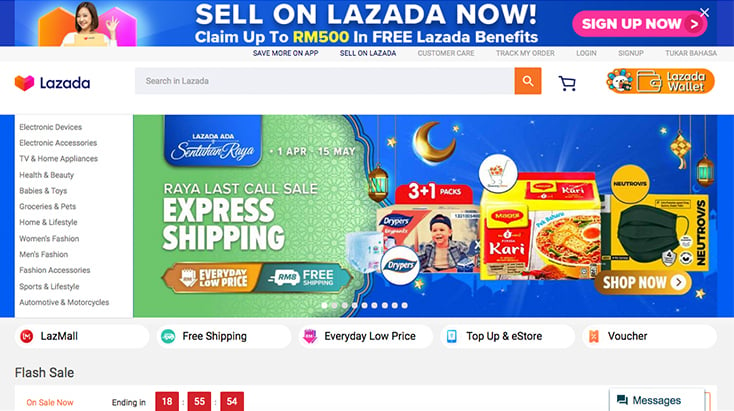
Who: Lazada is a prominent eCommerce platform operating in Southeast Asia, with a strong presence in countries like Indonesia, Malaysia, the Philippines, Singapore, Thailand, and Vietnam.
What: Lazada offers a diverse range of products, including electronics, fashion, beauty, and more, providing a comprehensive marketplace for sellers.
When: Established in 2012, Lazada has rapidly grown to become a key player in the Southeast Asian eCommerce landscape.
Where: Lazada primarily serves the Southeast Asian market, connecting sellers with a broad and diverse consumer base across multiple countries.
How much: Sellers on Lazada typically incur fees based on their sales, with a commission structure. Specifics may vary, and sellers should refer to the platform’s terms for accurate details.
Customer profile: Lazada attracts a significant monthly visitor count, estimating 150 million users throughout Southeast Asia.
Key requirements for sellers: Sellers need to meet specific criteria, ensuring product quality and compliance with Lazada’s policies. The platform may have certain verification processes for sellers.
10. Allegro
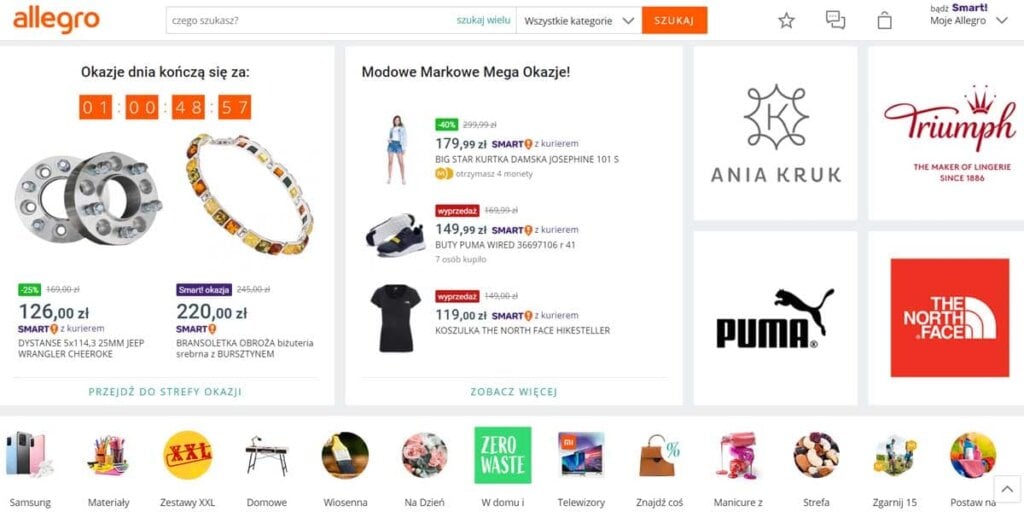
Who: Allegro is one of the best European marketplace alternatives to Amazon and eBay and the most popular in Poland. In October 2021, it reached the global top ten of eCommerce sites.
What: Home goods, kitchenware, clothing, baby products and sporting goods.
When: Established in 1999.
Where: Eastern Europe.
How much: It won’t cost anything to get started, but Allegro takes a 9-15% fee of each item sold. It also charges sellers who highlight listings or add more than one product photo.
Customer profile: In December 2023, the website received over 350 million visits that month alone.
Key requirements for sellers: You must ensure your product listings are written in Polish.
Related article: Selling on Allegro – One of Europe’s largest marketplaces
Final thoughts
Extending your reach around the world is surprisingly easy when you use online marketplaces. Whether you want to gain customers in Europe, Asia or the US, using some of the world’s biggest online marketplaces is a great way to get in front of new audiences and, ultimately, boost sales.
